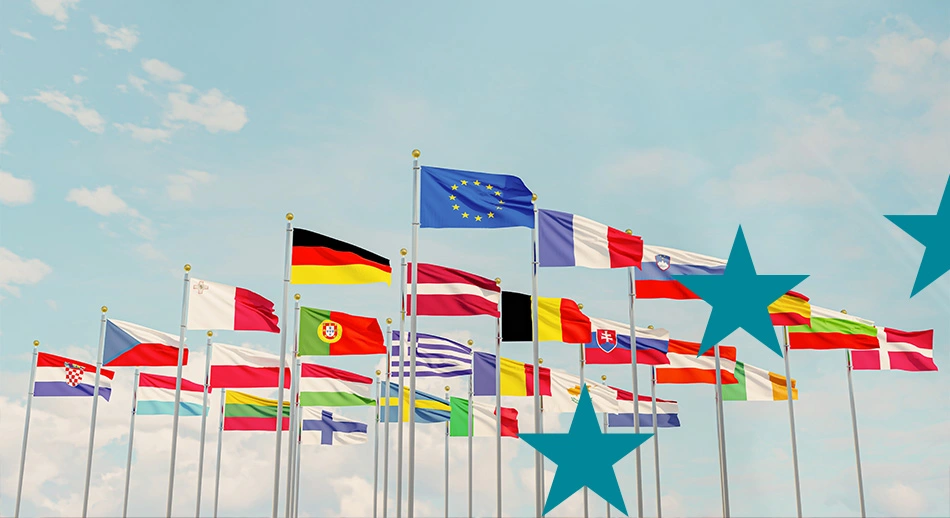The European Recovery and Resilience Facility, the largest part of NGEU, the so-called Recovery Fund, got the green light from the European Parliament: let’s take stock of the situation.
Recovery Fund, A major new milestone
The Regulation on the European Recovery and Resilience Facility, i.e., the largest part of the Recovery Facility (or Next Generation EU: look here for some terminological clarity) was recently approved by the European Parliament.
The vote was held on Feb. 9 and was announced the following day: for those who wish to delve deeper, here (starting on page 377) are all the details of the vote, which was supported by a very large majority of MEPs.
The news was rightly hailed in the media as an important new step toward the availability of a large “package” of European funds, which are particularly needed for the economic and social recovery of Europe and our territories.
This is actually a very important milestone: it is the regulation defining the targets, amounts and rules for accessing the European Recovery and Resilience Facility. Here is the text of the resolution and the regulation, with the amendments proposed by the European Parliament.
Formal approval by the Council is now awaited, expected in the coming days and in line with the political agreement already reached in December. The Regulation will enter into force just as quickly, that is, the day after its publication in the Official Journal of the EU.
Recovery Fund, the main points of the regulation
The text of the regulation is long and complex, but we can take up its main points by following the analysis of the European Parliament(1 | 2), which focuses mainly on the following elements:
- Structure of the Device: 672.5 billion in grants and loans, available to finance national measures to alleviate the economic and social consequences of the pandemic. Grants will amount to 312.5 billion euros and loans to 360 billion euros. You can find more detailed information regarding the availability of funds in Europe and Italy here;
- Timeline: all funds must be committed by the end of 2023 and all payments made by the end of 2026. National plans (for Italy, National Recovery and Resilience Plan, PNRR) are due by April 30. Payments will be made on the basis of maintaining the targets and timeline set by the plan. However, national projects and measures in response to the Covid-19 crisis initiated as of Feb. 1, 2020, will also be eligible for funding. In addition, countries will be able to apply for pre-financing equal to 13 percent of the total amount, paid upon final approval of the Plan;
- Thematic areas: actions should have a lasting impact in social, economic, environmental terms and include comprehensive reforms and a solid investment package. Six main areas of intervention are planned: green transition (to cover a minimum of 37 percent of the budget); digital transformation (minimum 20 percent of the budget); smart, sustainable and inclusive growth ; social and territorial cohesion; resilience and crisis preparedness; policies for new generations; and education and skills.
The control mechanisms
One of the most interesting and relevant aspects of the regulation concerns the multiple mechanisms for monitoring the effectiveness of the Device. Their goal is to ensure virtuous use of funds and prevent the so-called Recovery Fund from becoming an “automatic teller machine” for national or partisan interests. Specifically:
- countries will need to use the funds in line with EU priorities (as mentioned above) and take into account in their national plans the latest country-recommendations provided by European institutions;
- member states will have to duly justify and justify (with qualitative and quantitative explanations) how their plans respond to the challenges and priorities thus identified;
- the availability of funds is tied to respect for the rule of law and fundamental values of the EU;
- national plans will be evaluated by the Commission (in the first instance) and approved by the Council. The evaluation criteria are the classic ones(as in European projects): relevance, effectiveness, efficiency, consistency and sustainability (i.e., there will have to be evidence that goals and objectives achieved are maintained);
- member states will have to meet timelines and targets in the plan for having secured access to funds, and they will have to officially report twice a year on progress;
- The European Commission is responsible for monitoring the implementation of the Device and will share information with Parliament and the Council;
- there is an integrated information and monitoring system on the use of funds and the achievement of objectives, made available by the Commission to member states;
- the Commission undertakes to provide annual reports and periodic reports regarding the implementation of the Device;
- member states will have to avoid and correct an excessive deficit by maintaining order in public accounts and pursuing a macroeconomic adjustment program;
- modification of a member state’s plan is possible, but must be soundly justified, evaluated by the Commission, and approved by the Council.
More specific guidance is provided in the European Commission’s guidelines for member states, which have recently been published in a more comprehensive and updated version, clarifying especially the content and technical elements expected from national plans.
What lies ahead?
What conclusions to draw from this concise reading of the document?
The first, is that the so-called Recovery Fund will follow, in its design and principles, a path very similar to that of European projects. The reading of the mechanisms and criteria provided for the use of funds closely recalls what we have recalled to be the raison d’être of European projects from the very first pages of our Guide: not a “stockpile of funds” available for any kind of intervention, but a way to realize the objectives and strategic priorities of the European Union and provide a concrete response to the real needs of European citizens, collectively understood.
The second, is that this is not an easy path, requiring seriousness and commitment. Many of us know from firsthand experience how much seriousness and commitment it takes to use European funds on a single project: well, this approach applies, all the more so, to the substantial amount of funds made available to our country under the European Recovery and Resilience Facility. Our recent examination of the concept of “absorptive capacity “-evidently a vulnus for our country-is illustrative of the efforts ahead.
Finally, our country is in a very particular political phase: what we have recently published about Next Generation EU, the Recovery Fund and the National Recovery and Resilience Plan remains valid in general terms, but it is clear that a broad revisiting of the Plan is expected as far as Italy is concerned. The final parts of our paper (starting with the section “Contents – provisional framework for Italy”) are likely to be modified once the country’s new political structure is defined.
In light of this new stage and the contents of the newly approved Regulations, we hope that the coming months will lead us to take full advantage of this unique opportunity for revitalization offered by European Recovery Fund funds.




